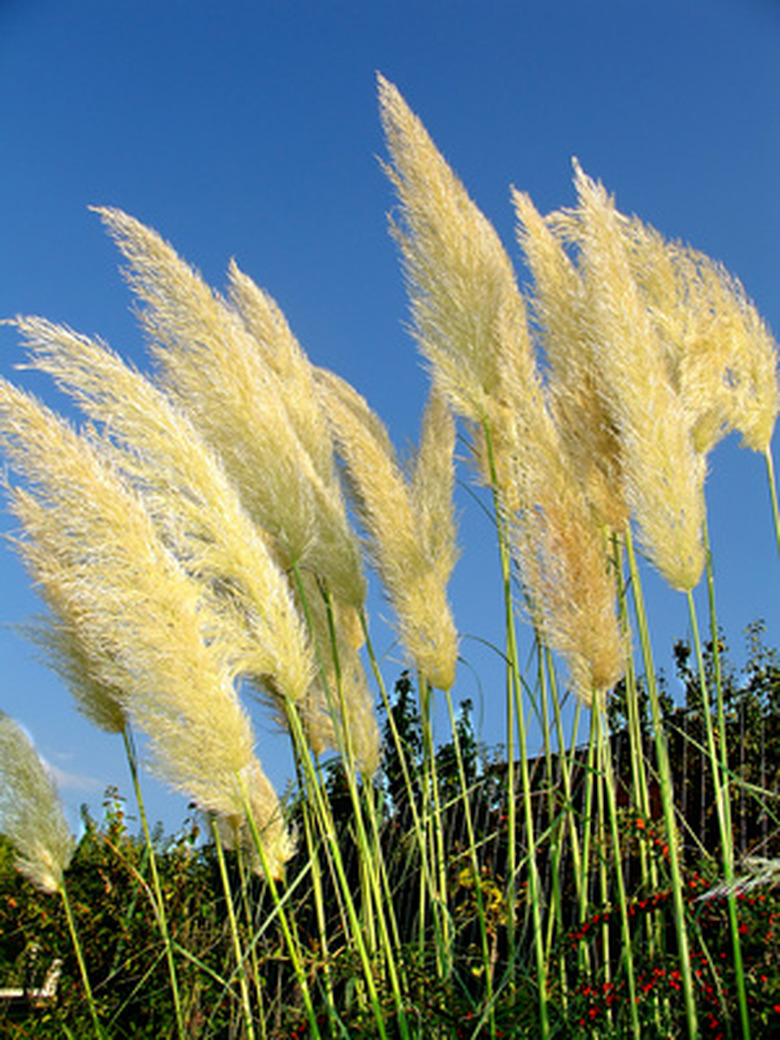How To Transplant Pampas Grass
Pampas grass (Cortaderia selloana) is a spectacular plant, reaching 10 feet in height. Favored in coastal areas because it is salt tolerant, pampas grass is cold hardy to zone 8 and can be grown as a container plant in colder areas. Plants will grow in zone 7, but may struggle due to cold weather. Pampas grass creates a nice backdrop in the landscape, but is too large for most gardens. It needs plenty of room to spread. Keep it away from paths and driveways; the leaves are sharp on bare skin.
Step 1
Obtain pampas grass for transplanting by growing grass from seed, dividing existing plants or purchasing plants in flats or pots.
- Pampas grass (Cortaderia selloana) is a spectacular plant, reaching 10 feet in height.
- Pampas grass creates a nice backdrop in the landscape, but is too large for most gardens.
Step 2
Choose a location with full sun and well-drained soil. Raised beds can be used to increase drainage when necessary. Allow space for plants to grow and fill in.
Step 3
Use a root barrier to outline the growing area and contain pampas grass to the desired area. This is optional, but recommended. Pampas is quite invasive over time and will take over the landscape.
Step 4
Dig a hole large enough to accommodate the roots. Plant seedlings or divided plants directly into the ground at the level they were previously grown. In cold areas, plant pampas grass in containers.
- Choose a location with full sun and well-drained soil.
- Use a root barrier to outline the growing area and contain pampas grass to the desired area.
Step 5
Water pampas grass every day or two after planting. Apply water directly to the root ball. Once the roots are established and extend beyond the root ball, taper off watering until water is necessary, only during dry periods.
Step 6
Fertilize each spring with 1 lb. of nitrogen per 1,000 square feet. Too much fertilizer will result in weak foliage and flower stems that are easily damaged by the wind.
Step 7
Prune pampas grass in late winter or early spring, before new shoots appear. Cut plants back to about 1 foot tall. Wear long sleeves and pants when pruning; pampas grass can cause cuts on unprotected skin.
- Water pampas grass every day or two after planting.
- Wear long sleeves and pants when pruning; pampas grass can cause cuts on unprotected skin.
Step 8
Divide pampas grass every three to four years, transplanting the divided clump. Dividing will keep the plant healthy and give it room to grow. The center of a clump will die if the grass becomes too crowded. Divide the plant and replant the healthy grass.
Things Needed
- Shovel
- Root barrier
- Fertilizer
